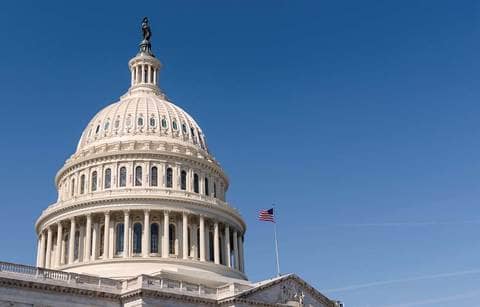On March 25, we hosted our webinar, COVID-19: Responding to the Families First Coronavirus Response Act, with experts from our employee benefits consulting and tax practices. During the webinar, we discussed what the Families First Coronavirus Response Act (FFCRA) means for organizations. With the FFCRA providing paid sick leave, free COVID-19 testing, an expansion of food assistance and unemployment benefits, and required employer provisions for additional protections for healthcare workers, more than 2,000 attendees had numerous questions for our presenters.
We’ve compiled the majority of attendee requests into these frequently asked questions below. In addition to this document, we have comprehensive resource centers for COVID-19 and the CARES Act.
What qualifies as a “quarantine or isolation order?”
The term “quarantine or isolation order” includes a broad range of governmental orders, including those that advise citizens to shelter in place, stay at home, or otherwise restrict mobility. As of publication, 43 states have enacted a stay-at-home order. Employers would need to review the applicable state order to determine whether their business is subject to the stay-at-home order. Based on guidance to the date, the Department of Labor would treat these stay-at-home orders as a “quarantine or isolation order.” A social distancing guideline or protocol would not amount to an order.
For an employee to be eligible for leave under the FFCRA due to a federal, state, or local quarantine or isolation order, the employee must be unable to work — even though the employer has work for the employee to perform — as a result of such order. This is distinguished from a situation where the employer closes an employee’s worksite due to lack of business or where it was required to close pursuant to a federal, state, or local directive. In such a circumstance, the employee would be unable to work regardless of the quarantine or isolation order. As a result, the analysis focuses on whether the employee would be able to work “but for” the quarantine or isolation order.
Who counts as an employer and an employee under the FFCRA?
The FFCRA applies to all private employers with fewer than 500 employees and certain public employers regardless of the number of employees. Certain employers with fewer than 50 employees may qualify for an exemption to provide leave to care for a child where the viability of the business is threatened.
An employer has fewer than 500 employees for purposes of the FFCRA if, at the time the employee’s leave is to be taken, the employer employs fewer than 500 full-time and part-time employees within the United States, which includes any state of the U.S., District of Columbia, or any territory or possession of the U.S. In making this determination, employers should include:
- Employees on leave.
- Temporary employees who are jointly employed by multiple employers.
- Day laborers supplied by a temporary agency.
Workers who are independent contractors under the Fair Labor Standards Act (FLSA) aren’t considered employees for purposes of the 500-employee threshold. In addition, workers who have been laid off or furloughed and haven’t been subsequently reemployed aren’t counted for this purpose.
In general, an entity is considered to be a single employer and its employees must each be counted toward the 500-employee threshold. Where one entity has an ownership interest in another, the two entities are separate employers for purposes of the employee count unless they are joint employers under the FLSA with respect to certain employees. If two entities are found to be joint employers, all of their common employees must be counted in determining whether paid sick leave and expanded family and medical leave must be provided under the FFCRA.
In addition, two or more entities are considered separate employers unless they meet the integrated employer test under the Family Medical Leave Act. When multiple entities are determined to be an integrated employer, then it’s the total number of employees of all entities making up the integrated employer that counts for purposes of the 500-employee threshold.
At what date do employers count employees for purposes of determining applicability of the mandate (fewer than 500) or possible exemption (fewer than 50)?
The employer should count its number of employees as of the date the leave is requested for purposes of determining the applicability of the mandate (or the exemption). The proposed DOL regulations (Department of Labor Temporary Rule, Part D of the Discussion), provide the following example:
“This determination is dependent on the number of employees at the time an employee would take leave. For example, if an employer has 450 employees on April 20, 2020, and an employee is unable to work starting on that date because a health care provider has advised that employee to self-quarantine because of concerns related to COVID-19, the employer must provide paid sick leave to that employee. If, however, the employer hires 75 new employees between April 21, 2020, and August 3, 2020, such that the employer employs 525 employees as of August 3, 2020, the employer would not be required to provide paid sick leave to a different employee who is unable to work for the same reason beginning on August 3, 2020.”
If an employer provides accommodations for an employee to work from home, does the employee qualify for sick leave under the Act if he or she is otherwise healthy and able to work?
No, if an employee is able to work remotely (telework), the employee doesn’t qualify for sick leave under the FFCRA. However, in the case of leave to care for a child, the employee and employer may agree to the employee taking intermittent leave but only when the employee is unable to telework due to the COVID-19-related reason.
How does an employer with fewer than 50 employees get an exemption?
An employer with less than 50 employees is exempt from the requirement to provide paid leave or paid leave when:
- Such leave would cause the employer’s expenses and financial obligations to exceed available business revenue and cause the small employer to cease operating at a minimum capacity.
- The absence of the employee or employees requesting such leave would pose a substantial risk to the financial health or operational capacity of the small employer because of their specialized skills, knowledge of the business, or responsibilities.
- The employer can’t find enough other workers who are able, willing, and qualified, and who will be available at the time and place needed, to perform the labor or services the employee or employees requesting leave provide, and these labor or services are needed for the small employer to operate at a minimal capacity.
The proposed regulations provide that the employer may deny the leave only to those otherwise eligible employees whose absence would threaten the viability of the business. Based on our understanding, the exemption wouldn’t exempt the employer across all employees, but would be specific to certain employees.
The regulations provide that if the small employer denies the leave, the employer must document the facts and circumstances that meet the above criteria to justify the denial.
The regulations provide that the documents should be retained by the employer and not filed with the DOL.
How do these provisions interact with benefits set under collective bargaining agreements?
The FFCRA in and of itself doesn’t supersede any employer obligations under a collective bargaining agreement. The FFCRA merely states that an employer, consistent with its bargaining obligations and its collective bargaining agreement, may satisfy its obligations under the FFCRA by making contributions to a multiemployer fund, plan, or program based on the hours of paid sick time or family leave time for its entitled employees. However, an employer may be required to make additional contributions to a multiemployer fund, plan, or program based on the terms of a collective bargaining agreement.
How do these FFCRA rules interact with state rules?
The DOL’s guidance provides that the FFCRA imposes new leave requirements on employers and its paid sick leave benefits are in addition to, and don’t count against:
- Other leave provided by federal, state, or local law.
- An applicable collective bargaining agreement.
- An employer’s existing leave policy.
The FFCRA should be considered the “floor” or the minimum requirements and a state or local law may provide for greater employee benefits. Employers are advised to work with labor and employment counsel to make sure all state and local requirements are satisfied in addition to those under the FFCRA.
DOL guidance also clarifies that while an employee may consent to using existing paid leave offered under an employer’s existing paid leave policies to supplement paid sick or family leave under the FFCRA, an employer can’t require its employees to use existing paid time off for such purposes.
What are the employer and employee documentation requirements around the FFCRA?
A series of IRS and DOL FAQs provide guidance on the documentation requirements for an employer to substantiate eligibility for the credit. Under this guidance, a covered employer should retain records documenting the employees need for the leave and additional records documenting how the employer calculated the credit and related filings for at least four years.
To qualify for the FFCRA’s sick or family leave credits, the IRS guidance provides that the leave must be documented by a written request from the employee that includes:
- The employee’s name.
- The date the leave is requested.
- A statement of the COVID-19-related reason the employee is requesting leave and the written support for such reason.
- A statement that the employee is unable to work, including telework, for such reason.
The employer should also retain documentation showing:
- How the employer determined the amount of sick and family leave wages paid to eligible employees (including records of work, telework, qualified sick leave, and qualified family leave).
- How the employer determined the amount of qualified health plan expenses allocated to the qualifying wages.
What types of payroll tax credits are available under the FFCRA?
Payroll tax credits are available if an employer is required to pay either of the following leaves as required under the FFCRA:
- Payroll credit for required sick leave — The required paid sick leave credit is a refundable payroll tax credit. The credit is allowed in an amount equal to 100% of the qualified sick leave wages paid by the employer during 2020, subject to certain per employee limitations.
- Payroll credit for required family leave — The family leave credit is a refundable credit equal to 100% of any wages or healthcare expenses that an employer is required to pay under the FFCRA, also subject to per employee limitations.
How is the credit amount calculated?
Payroll credits under the FFCRA are based on the amount an employer pays in sick and family leave wages, but they’re limited to the amount required to be paid. This means that the credit will equal the lesser of 100% of the qualified wages or the per-employee limitations. The credits for sick and family leave are calculated as follows:
- Payroll credit for required sick leave — The FFCRA requires an employer to pay up to $511 per day for employees who:
- Are subject to a federal, state, or local quarantine isolation order related to COVID-19.
- Have been advised by a healthcare provider to self-quarantine due to concerns related to COVID-19.
- Are experiencing symptoms of COVID-19 and are seeking a medical diagnosis.
The Act also requires employers to pay up to $200 per day of family leave for employees that are:
- Caring for an individual subject to a quarantine isolation order or who has been advised to self-quarantine (as discussed above).
- Caring for a son or daughter if the school or place of care of that child has been closed, or the childcare provider of such son or daughter is unavailable due to COVID-19 precautions.
Employers are required to provide up to 10 days (or 80 hours) of leave for all of 2020 under this provision.
- Payroll credit for required family leave — The FFCRA extends the $200 per day family leave requirement described above for an additional 10 weeks beyond the 10 days or 80 hours noted previously. Any wages paid in excess of $200 are not eligible for the credit. However, healthcare expenses and Medicare taxes paid on behalf of the employee during the leave do qualify for the credit, even if they result in a total per-day cost that exceeds $200. The maximum limit is $10,000 (which represents the 10 weeks of paid family leave at $200 per day required to be provided by the FFCRA) plus healthcare expenses and Medicare tax.
Are the credits available to employers that provide benefits, even if they’re not required to do so?
No. Payroll tax credits under the FFCRA are only available to employers who are required to pay wages under either the paid family leave or paid sick leave provisions of the Act.
Employers who fall outside of the FFCRA requirements but still provide paid leave should consider whether the payroll tax credit or payroll tax deferral provisions of the CARES Act are applicable.
Is an employer allowed to claim a payroll tax credit under the FFCRA if it paid employees expanded family or sick leave wages prior to April 1, 2020?
No. Payroll tax credits are only available for paid sick or family leave paid by the employer on or after April 1, 2020.
How are the credits claimed?
Employers can claim the benefit of these credits by choosing to either:
- Retain any payroll taxes and withholdings otherwise required to be deposited in an amount up to its anticipated credit (including payroll taxes and withholdings on amounts unrelated to qualified sick leave).
- File Form 7200 to obtain an advance repayment of the credit.
- Claim a refund on a quarterly payroll tax return.
The IRS has also issued Notice 2020-22 providing that an employer will not be subject to any failure to deposit penalties with respect to payroll taxes retained in an amount equal to the anticipated credit. Ultimately, these credits will be reconciled through quarterly payroll tax filings, but the retention of withholdings and advance refund claims offer more expeditious paths to obtaining the cash benefit of the credits.
Are any entities in the 50–500 employee range not entitled to the credits? (Nonprofits, state and local governments?)
It depends. Certain types of employers aren’t eligible for the credit, including: the federal government, state and local governments, or respective agencies or instrumentalities. Not-for-profit entities are eligible for the sick and family leave credits under the FFCRA, but wages included in this credit may not be included in any other employment-related credits.





